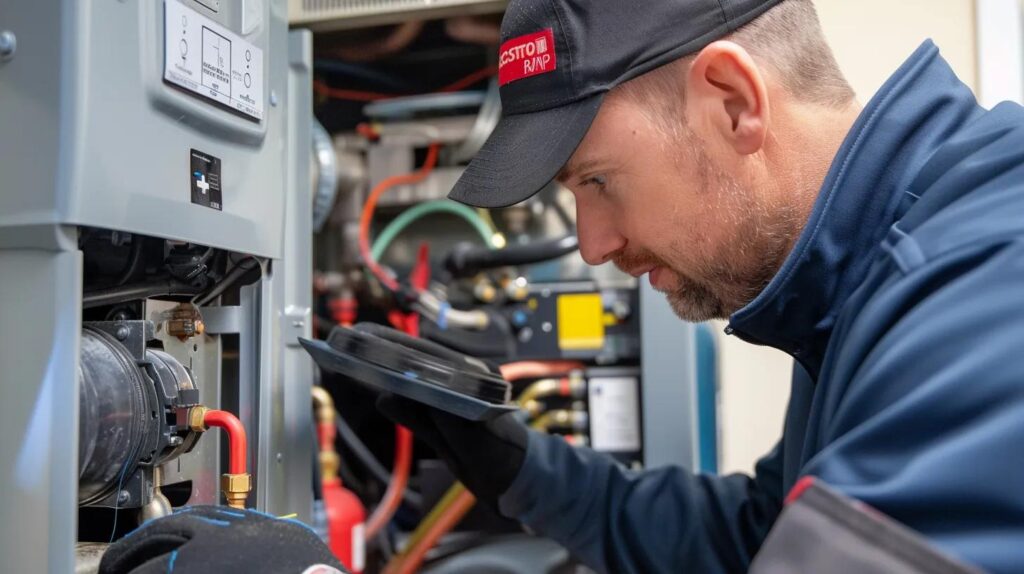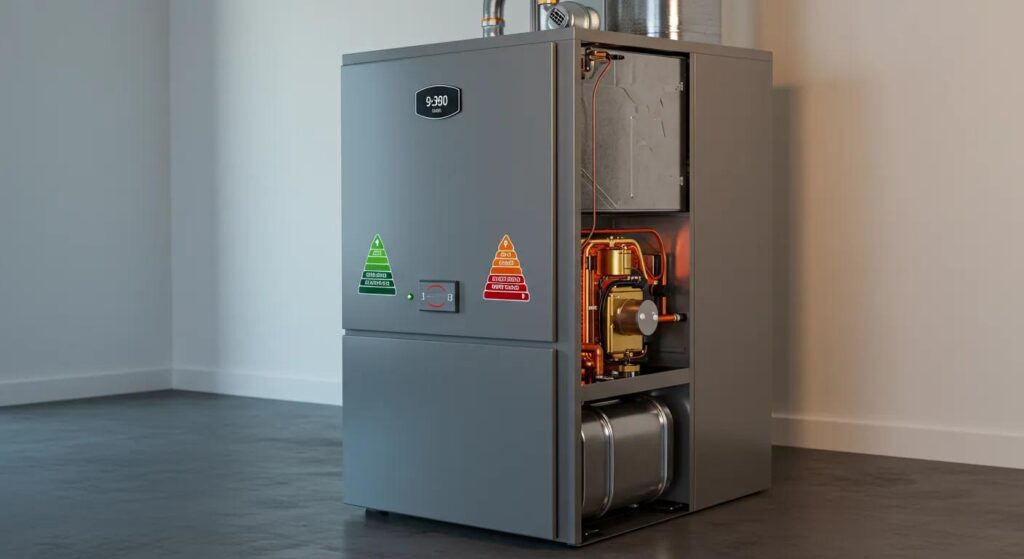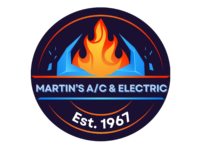
Understanding Furnace Installation Costs: Your Complete Guide to Furnace Replacement and Installation Prices in the USA
Knowing what goes into furnace installation costs is your first step toward guaranteed heating and predictable budgeting for homeowners and businesses in Galliano, LA. The exact cost of replacing your furnace depends on several key factors—the type of fuel it uses, its size, its energy efficiency, how complex the installation is, the quality of the brand, any extra fees, and when you schedule the work. We’ll break down each of these in this guide. You’ll discover how natural gas, electric, oil, propane, or heat-pump systems compare in price; why the right BTU capacity and AFUE rating are crucial for long-term savings; how your ductwork’s condition, necessary permits, and local labor rates all impact the final quote; and which furnace brands offer the best value and warranty protection. We’ll also cover hidden costs, financing options, and smart timing strategies to help you save on a new furnace. Throughout this guide, you’ll see how the family-owned Martin’s Heating & Air Conditioning team brings clear pricing, certified technicians, and complimentary estimates to every installation. By understanding these elements, you’ll get a clear picture of the total investment and find practical ways to manage your furnace installation costs from start to finish.
What Are the Main Types of Furnaces and How Do They Affect Installation Costs?
The type of furnace you choose, based on its fuel source and technology, directly influences its purchase price, the labor involved in installation, and ongoing operating expenses. Natural gas furnaces often offer a moderate upfront cost combined with strong heating output, while electric units might have a lower equipment price but higher energy bills. Oil-fired and propane furnaces require specialized venting and fuel storage solutions, which can increase installation labor. Heat pumps function as both heating and cooling systems, potentially lowering operating costs, but they need precise sizing and advanced inverter technology.
Here’s a look at common furnace types and their typical installation-only price ranges:
| Furnace Type | Installation-Only Price Range | Key Considerations |
|---|---|---|
| Gas Furnace | $1,500–$3,500 | Requires connection to a gas line and proper venting |
| Electric Furnace | $1,200–$2,500 | Simpler installation but higher energy consumption |
| Oil Furnace | $2,000–$4,000 | Needs an oil tank, fuel line, and exhaust modifications |
| Heat Pump | $2,500–$5,000 | Provides both heating and cooling with inverter technology |
How Does Gas Furnace Installation Cost Compare to Other Fuel Types?
The cost to install a gas furnace typically falls within a moderate range because natural gas units benefit from widespread availability and straightforward venting requirements. A standard gas furnace includes a gas valve, heat exchanger, and flue connection, which our Martin’s Heating & Air Conditioning technicians can usually install in about 4 to 8 hours. This efficient process helps keep labor charges reasonable, making the average cost for a new furnace more predictable compared to oil or electric options. Thorough combustion testing and safety checks are performed to ensure efficient operation and longevity, adding to the overall value.
What Are the Installation Costs for Electric Furnaces?
The installation cost for electric furnaces is often competitive for the equipment itself, but they tend to have higher operating expenses due to electricity rates. Electric systems don’t require combustion chambers or gas lines, which can reduce ductwork modifications and associated labor. However, they do need heavy-duty wiring and potentially upgraded circuit breakers. Our licensed technicians will verify your capacity and may need to install new circuit conductors, adding to the initial labor cost. While installation quotes typically range from $1,200 to $2,500, homeowners should carefully consider their annual heating bills when comparing the total cost of a new furnace.
How Do Oil and Propane Furnaces Impact Installation Pricing?
Installing oil and propane furnaces often involves additional fees because they require fuel storage tanks, pumps, and specialized venting systems. Propane units need secure tank connections and leak-tested piping, while oil systems require specific furnace filters, burners, and exhaust stacks designed for heavier fuel. The added complexity of these fuel systems can increase installation labor and materials costs by approximately $500 to $1,000, bringing the replacement cost closer to the range. Our technicians also perform comprehensive combustion analyses to ensure safety and efficiency standards are met.
Are Heat Pumps a Cost-Effective Alternative to Traditional Furnaces?
Heat pumps provide both heating and cooling by circulating refrigerant, eliminating the need for separate air conditioning equipment and improving overall seasonal efficiency. While the installation cost can be 10–20 percent higher than traditional furnaces due to intricate refrigerant lines and advanced inverter controls, the potential operational savings of up to 30 percent on energy bills often justify the initial investment. In Galliano’s climate, a heat pump can keep your home comfortable year-round and may qualify you for local rebates on high-efficiency split-system upgrades.
How Does Furnace Size and Heating Capacity Influence Installation Price?
Choosing the correct furnace size is critical for both cost and performance. The heating capacity, measured in British Thermal Units (BTU), directly affects the equipment expense and the system’s overall efficiency. An undersized unit will struggle to heat your home, leading to longer run times and higher utility bills. Conversely, an oversized system will cycle on and off too frequently, causing increased wear and tear and potentially higher maintenance costs. Proper sizing helps minimize both the initial purchase price and long-term operating expenses.
Key factors that help determine the right capacity include:
- The total square footage and layout of your property
- The quality of insulation in your walls and attic
- Your local climate and the range of temperature fluctuations
- The efficiency of your windows and how well your home is sealed against air leaks
Carefully considering these variables during a load calculation allows our technicians to recommend a furnace that balances installation cost with optimal energy consumption, setting the stage for a detailed discussion on sizing mechanics.
What Is BTU and Why Is Correct Furnace Sizing Crucial?
BTU, or British Thermal Unit, is a standard measure of heat output, representing the amount of energy required to raise the temperature of one pound of water by one degree Fahrenheit. Correct furnace sizing means matching the unit’s BTU capacity to your home’s specific heat loss calculations, ensuring efficient operation and consistent comfort. A properly sized system avoids short-cycling (turning on and off too frequently), which reduces stress on components and minimizes the need for service calls. Precise BTU alignment also leads to more predictable installation quotes and steadier monthly energy bills.
How Do Property Size and Insulation Affect Furnace Capacity Needs?
Larger homes and open-concept living spaces generally require higher BTU output to maintain a uniform temperature throughout. Similarly, properties with less effective insulation, older windows, or high ceilings tend to lose heat more quickly, necessitating a more powerful furnace. Evaluating your home’s insulation R-values alongside the performance of your windows helps our technicians recommend equipment size that controls installation price while preventing both under- and over-investment in capacity.
How Can Incorrect Furnace Size Increase Installation and Operating Costs?
An undersized furnace must run for extended periods to reach your desired temperature, leading to increased energy consumption and more frequent maintenance needs. On the other hand, an oversized furnace cycles on and off too rapidly. This can cause premature wear on its components and result in inefficient humidity control. Both scenarios ultimately increase your overall costs, either through higher utility bills or more frequent heater replacement, highlighting the importance of accurate load calculations from the very beginning.
How Do Energy Efficiency Ratings Impact Furnace Installation Costs and Savings?

Energy efficiency is measured by the Annual Fuel Utilization Efficiency (AFUE) rating, which tells you the percentage of fuel your furnace converts into usable heat. Higher AFUE models typically come with a higher upfront cost—often 15–30 percent more than standard units—but they deliver greater annual savings on your heating bills. Many homeowners find that the premium paid for a high-efficiency unit is recouped within five to seven years, especially in colder climates.
Choosing a furnace with the right AFUE rating involves balancing the initial installation price with your projected energy expenses. Detailed savings analyses can help you compare systems with an 80 percent AFUE versus those with a 95 percent AFUE, guiding your investment toward high-efficiency equipment that aligns with your budget and environmental goals.
What Is AFUE and How Does It Affect Your Heating Bills?
AFUE represents the ratio of heat delivered to fuel consumed, expressed as a percentage. For example, a furnace with a 95 percent AFUE converts 95 percent of its fuel into heat, with only 5 percent lost through exhaust and combustion inefficiencies. Opting for higher AFUE units can reduce your annual fuel consumption by up to 20 percent compared to baseline models, significantly lowering the lifetime cost of operating your appliance.
Are High-Efficiency Furnaces Worth the Higher Installation Price?
High-efficiency furnaces do come with a higher installation price tag, but they offer greater long-term value through reduced fuel consumption and potential eligibility for rebates. Even when factoring in the initial cost difference—which can be $500–$1,000 more than standard units—the lower operational bills typically offset the extra expense within a few years. This trade-off clearly demonstrates how energy efficiency ratings influence the overall and the total cost of ownership.
What Government Incentives or Rebates Are Available for Energy-Efficient Furnaces in Louisiana?
Homeowners in Louisiana may be eligible for federal tax credits on furnaces with AFUE ratings above 90 percent. Additionally, state and local utility providers often offer rebates for installing high-efficiency HVAC equipment. These incentives can significantly reduce the net installation cost, making premium systems more affordable and encouraging the adoption of energy-saving technology.
What Installation Complexities Influence Labour Costs and Total Furnace Installation Price?
Installation complexity encompasses several factors, including the condition of your existing ductwork, specific venting requirements, necessary electrical upgrades, and the process of obtaining permits. Duct systems that are in good repair require minimal additional labor, while damaged or improperly sized ducts may need modifications or replacement, adding to material and fitting charges. Vent pipes, flue liners, and exhaust adjustments also contribute to the overall labor time. Electrical panel upgrades for high-efficiency furnaces are another potential cost. Finally, local permits and inspections, which are required by Galliano, LA regulations, involve fixed fees that installers must include in the total furnace installation price.
How Does Existing Ductwork Condition Affect Installation Complexity and Cost?
Ductwork that is properly sized, sealed, and insulated allows our technicians to install a new furnace with minimal adjustments, helping to keep labor charges down. Conversely, outdated or leaky ducts may require realignment, replacement of sections, or sealing work, which can add 4–10 hours of skilled labor. Addressing these ductwork issues upfront not only prevents efficiency losses but also helps maintain good indoor air quality.
What Are the Costs of Venting, Electrical Upgrades, and Permits?
Ensuring proper flue liners, vent transitions, and chimney repairs are in place is essential for the safe exhaust of combustion gases. These venting tasks can add approximately $300–$800 in materials and labor. Electrical panel or breaker upgrades for modern furnaces typically range from $200 to $600, depending on the required amperage. Permit fees in Galliano generally average $100–$250, covering the cost of inspections and verification of code compliance.
How Do Local Labour Rates in Galliano, LA Affect Your Furnace Installation Price?
Labor rates in Galliano are influenced by the local cost of living and the availability of skilled technicians. Experienced HVAC installers may charge between $60–$100 per hour. At Martin’s Heating & Air Conditioning, we are committed to transparent communication and honest pricing. Understanding these local labor dynamics can help you better anticipate hourly charges and manage your project budget effectively.
Why Is Hiring Licensed and Experienced Technicians Important for Installation Quality?
Licensed HVAC professionals bring proven expertise in system calibration, adherence to safety protocols, and performance optimization. Their familiarity with local building codes and manufacturer requirements minimizes the risk of installation errors that could lead to additional repair costs down the line. Trustworthy installation by experienced technicians ensures your warranty remains valid and contributes to the long-term reliability of your system.
How Do Furnace Brand and Component Quality Affect Installation Cost and Warranty?
The reputation of a furnace brand and the quality of its construction influence the equipment price, the durability of its components, and the length of its warranty. Top manufacturers like Trane, Fujitsu, and Heil often partner with installers to offer extended warranties, sometimes up to 10 years on heat exchangers. Other brands might have more limited coverage. Higher-end models frequently use advanced materials, such as stainless-steel heat exchangers and variable-speed blowers, which can add $500–$1,500 to the supply cost but help reduce maintenance expenses over the unit’s typical 15–20-year lifespan.
Which Furnace Brands Offer the Best Value for Installation Cost?
Brands that successfully combine reliable performance, robust warranties, and moderate price points—such as Heil or Goodman—often provide the best balance between installation cost and long-term savings. Our licensed installers at Martin’s Heating & Air Conditioning can help you match specific brand features to your home’s unique requirements, ensuring you get the most value.
How Do Advanced Features Like Smart Thermostats Influence Price?
Integrating advanced features like smart thermostats, zone-control dampers, or modulating burners can increase installation complexity and the supply cost by $200–$600. However, these features offer precise temperature regulation, remote diagnostics, and energy-saving scheduling capabilities, which can accelerate your return on investment through reduced heating cycles and improved comfort.
What Warranty Options Should You Consider When Choosing a Furnace Brand?
Key warranty components to look for include coverage for the heat exchanger, terms for parts replacement, and labor protection. Aim for brands that offer at least a 10-year warranty on the heat exchanger and 5-year coverage on parts. Optional labor protection plans can safeguard you against repair costs during the first couple of years, providing extra peace of mind for your furnace investment.
What Additional Costs and Potential Savings Should Homeowners Expect During Furnace Installation?
Beyond the core equipment and labor, anticipate potential charges for removing and disposing of your old unit, thermostat upgrades, and optional maintenance plans. The removal and recycling of an existing furnace typically add $100–$300, depending on accessibility. Upgrading to a Wi-Fi enabled thermostat can cost $150–$300 fully installed. Annual maintenance plans, starting around $100 per year, can extend your system’s lifespan and preserve its efficiency, potentially reducing future repair bills. Financing options, such as low-interest payment plans or manufacturer rebates, can also help spread out the furnace installation cost over time without creating an immediate financial strain.
How Much Does Old Furnace Removal and Disposal Add to Installation Costs?
Removing an old furnace involves safely disconnecting gas, electrical, and venting lines, as well as proper disposal of any potentially hazardous materials. Our installers typically charge a flat fee between $100 and $250 for this service, ensuring electrical services compliant recycling and disposal.
Conclusion
Understanding furnace installation costs empowers homeowners to make informed decisions that align with their heating needs and budget. By considering factors such as fuel type, efficiency ratings, and installation complexities, you can optimize your investment for long-term savings and comfort. Don’t hesitate to reach out to our expert team at Martin’s Heating & Air Conditioning for personalized guidance and transparent pricing. Explore our services today to ensure your home stays warm and efficient all year round.



